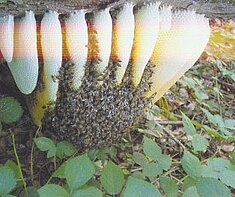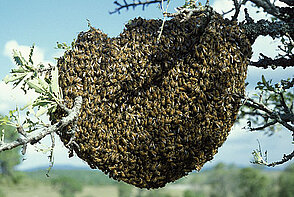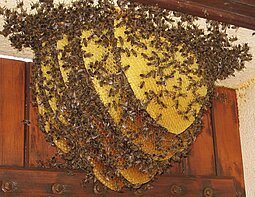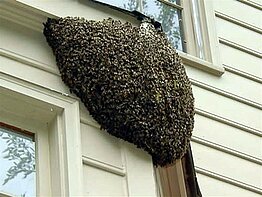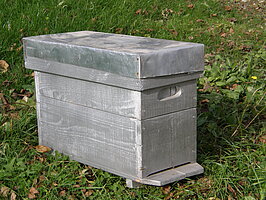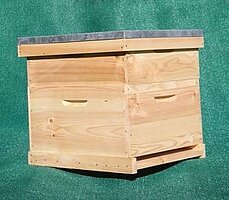Installation of a "bee swarm trap hive".
Objective: Capture wild swarms or swarms from frame hives to divert them from undesirable locations: hole in a tree, chimney, tree, shrub, ....
Natural" swarms cannot survive varroa mite infestations for more than 18 months.
It's better for the bees to find a quality habitat- a hive - and to find a beekeeper who can help them survive.
(copie 1)
Trap hive
This is a 5-frame dadant hive: 1 frame with a frame and 4 frames with embossed wax.
It is also possible to use a 10-frame dadant hive reduced by partitioning to 5 frames.
The hive is placed at a height of at least 1 metre: in a public garden, a private garden, etc., with no restrictions on distance from public roads or places. Initially, there are no bees in these traps.
A watch is kept to observe the arrival of a swarm. The swarm is "hived" and taken to the L'Abeille Olivetaine apiary that same evening.
The best time for swarming is from 15 April to 30 June. After 30 June, the trap hives will be removed.
Contacts
L'Abeille Olivetaine
Tel: 06 07 30 78 93 - Mail: labeilleolivetaine@orange.fr
Website: www.abeille-olivetaine.fr
Swarms by a swarm picker
In our regions, the swarming of bee colonies occurs mainly between April and June. The swarms settle in/on extremely diverse locations and supports: tree branches, tree trunks, walls, garden sheds, hives, etc. and trap hives. A bee colony needs an internal temperature of 34.5 degrees at all times. Colonies in the open air cannot survive in bad weather (cold, frost, rain, snow, heatwave, etc.). As a result, beekeepers are obliged to collect swarms and install them in hives. For health reasons, the swarms collected are quarantined in a dedicated apiary. A swarm has a market value of between €50 and €200, but it takes a lot of time to create this value.

